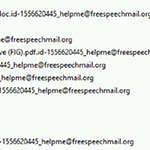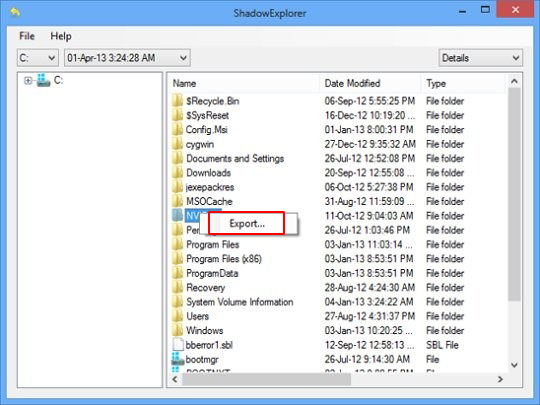Table of Contents
Learn how to recover files blatantly encrypted by [email protected] virus and completely remove this ransomware from the infected computer.
Security professionals have by now confronted ransomware samples that feature a robust infrastructure, automatic links to the file decryption service and other C2 components, as well as sleek graphics accompanying the assault. In the case of [email protected] plague, things are a little bit off the fancy path, though. The email above denotes part of the file extension which is added to regular extensions of the objects that the ransomware has encrypted. More specifically, if a victim’s Microsoft Word file gets processed by the infection, its extension string will look like this: “.doc.id-{10 random digits}[email protected]”. Not only do these items appear weird on the outside, but they also cannot be opened using the default programs or alternative software, which is the most unfortunate effect of ransomware hoaxes.

This ransom trojan attack also involves the emergence of a .txt file with an indiscreet name of “VIRUSFUCKEDYOURFILES”. This entity tends to be created in every folder with illicitly encrypted information and it contains details of the hijack. In particular, the user is informed that they have fallen victim to the type of compromise where data recovery presupposes submitting a payment. Alternatively, the targeted person can shoot an email to [email protected], which will be followed by an incoming message from the virus publisher. It says that 3 BTC must be paid otherwise the personal documents, images, videos and presentations will stay inaccessible. As a “bonus”, the fraudsters provide an option of test decryption, where the user can send them one file and get its decoded copy back.
It’s fairly ironic but getting infected with this email-involving virus usually takes place through contagious email attachments. The would-be cyber prey receives a fake message masqueraded to resemble an official notification from a law enforcement agency or delivery company. Once the attachment gets opened, the trojan will be immediately executed on the system. Then goes a scan of the hard drive in search of personal files, which is a sneaky workflow that shouldn’t be noticed by the PC admin. The spotted data undergoes encryption, and the extortion proper begins. [email protected] is by all means a nasty ransomware that targets one’s most precious information stored on the machine. Reputable security tools can cope with the infection itself, but making the encrypted files accessible again is a matter of separate effort on the victim’s end.
Automatic removal of the [email protected] virus
When it comes to handling infections like this one, using a reputable cleaning tool is the place to start. Sticking to this workflow ensures that every component of the adware gets found and eradicated from the affected computer.
1. Download and install the cleaning tool and click the Start Computer Scan button Download [email protected] removal tool
2. The wait is worth it. Once the scan completes, you will see a report listing all malicious or potentially unwanted objects detected on your PC. Go ahead and click the Fix Threats option in order to get [email protected] automatically uninstalled from your machine. The following steps are intended to restore the encrypted files.
Recover files locked by the ransomware
Removing the infection proper is only a part of the fix, because the seized personal information will stay encrypted regardless. Review and try the methods below to get a chance of restoring the files.
Option 1: BackupsThe cloud works wonders when it comes to troubleshooting in the framework of ransomware assault. If you have been keeping data backups in a remote place, just use the respective feature accommodated by your backup provider to reinstate all encrypted items.
Option 2: Recovery toolsThe research of [email protected] virus reveals an important fact about the way it processes the victim’s data: it deletes the original files, and it’s actually their copies that are encrypted. In the meanwhile, it is common knowledge that anything erased from a computer doesn’t completely vanish and can be dragged out of memory via certain techniques. Recovery applications are capable of doing this, so this method is surely worth a try.
Option 3: Shadow CopiesThe Windows operating system incorporates a technology referred to as the Volume Snapshot Service, or VSS, which performs files or volumes backup routine automatically. One critical prerequisite in this regard is to have the System Restore feature toggled on. In case it has been active, some data segments can be successfully recovered.
You may perform this activity with the Previous Versions functionality, which is built into the OS, or by means of special applications that will do the job automatically.
-
Previous Versions feature
Right-click on a file and choose Properties in the context menu. Find a tab named Previous Versions and click on it to view the last automatic backup that was made. Depending on a preferred action, click Restore to get the file recovered to its original location, or click Copy and indicate a new directory.

-
Shadow Explorer applet
It’s remarkably easy to manage Previous Versions of files and folders with automated tools like Shadow Explorer. This program is free to use. Download and install it, let it come up with a profile of the file hierarchy on the computer, and get down to the restoration proper. You can select a drive name on the list, then right-click on the files or folders to recover, and click Export to proceed.

Did the problem go away? Check and see
Computer threats like ransomware may be stealthier than you can imagine, skillfully obfuscating their components inside a compromised computer to evade removal. Therefore, by running an additional security scan you will dot the i’s and cross the t’s in terms of the cleanup.




help me!!!
please help me ,,,recovery my file data
( text.doc.crypt;pictuter.jpeg.crypt;..)
Try the instructions above. Should at least help with the recovery of some files.